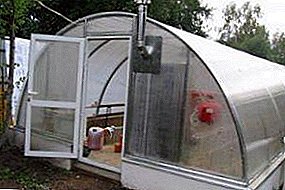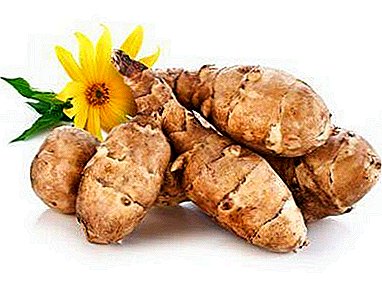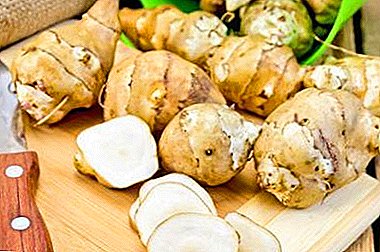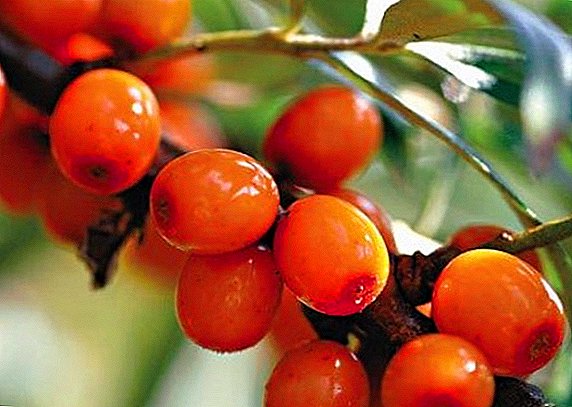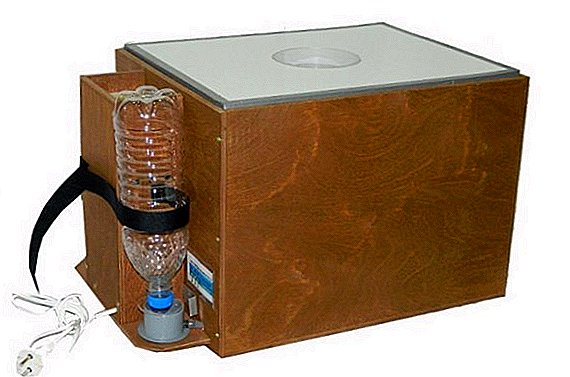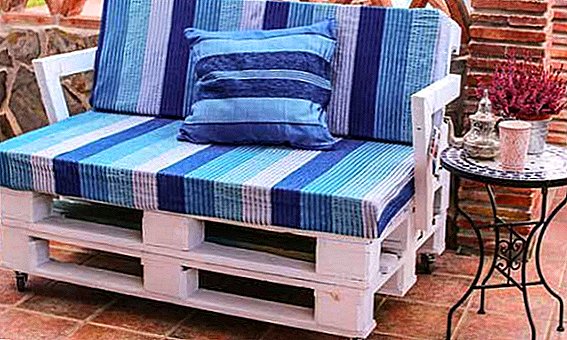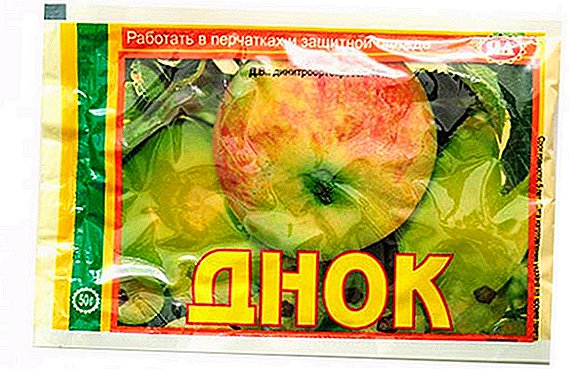 Conifers in many ways surpass the strongest green organisms of our planet. They are not only invaluable economic, but also of great environmental importance. Along with these indicators, the picturesqueness of evergreens is not the last. Let's take a closer look at one of the types of conifers called juniper horizontal.
Conifers in many ways surpass the strongest green organisms of our planet. They are not only invaluable economic, but also of great environmental importance. Along with these indicators, the picturesqueness of evergreens is not the last. Let's take a closer look at one of the types of conifers called juniper horizontal.
Juniper horizontal: general description
Juniper horizontal similar to the Cossack juniper. It is a creeping dwarf evergreen shrub from 10 to 50 cm in height. The crown circumference, depending on the variety, varies from 1 m to 2.5 m. The plant is slow-growing. The main branches are elongated, often covered with young, having four faces of blue-green color. The needles of a horizontal juniper can be needle-shaped, up to 5 mm long, or scaly, up to 2.5 mm long. The color of the needles is converted from green to silver, sometimes yellow. Closer to winter, the needles of all varieties become purple or brown.  The fruit of the bush is a cone of a dark blue color, of a spherical shape, it ripens within two years. The fruit covers a blue patina. The plant is wind, frost and dry. Juniper is grown to decorate alpine slides, rockeries, slopes, used as a groundcover, in beds and rabatkah, in single and group plantings. Habitat in habitat - mountains, hillsides and sandy shores of Canada and North America. Horizontal juniper has about a hundred decorative varieties, the most popular of them are presented below.
The fruit of the bush is a cone of a dark blue color, of a spherical shape, it ripens within two years. The fruit covers a blue patina. The plant is wind, frost and dry. Juniper is grown to decorate alpine slides, rockeries, slopes, used as a groundcover, in beds and rabatkah, in single and group plantings. Habitat in habitat - mountains, hillsides and sandy shores of Canada and North America. Horizontal juniper has about a hundred decorative varieties, the most popular of them are presented below.
Did you know? Phytoncides emitted during the day by one hectare of juniper plants can disinfect the air of a large metropolis.
"Andorra Compact"
Juniper "Andorra Compact" was brought to the USA in 1955. The shape of the crown is thick, pillow. The height of the shrub reaches 40 cm, diameter up to one meter. The main shoots are directed at an angle upwards from the middle of the bush. Bark gray-brown color. The needles are represented by thin, short scaly needles in the summer of gray-green, and in the winter of lilac color.  The fruits of the spherical bush, with dense fleshy flesh, have a gray-blue color. Andorra Compacta is a juniper that prefers well-lit areas for growing. The bush is frost-resistant, loves sandy moist soil and does not tolerate dry air. Apply "Andorra compact" for growing on alpine hills, retaining walls, slopes.
The fruits of the spherical bush, with dense fleshy flesh, have a gray-blue color. Andorra Compacta is a juniper that prefers well-lit areas for growing. The bush is frost-resistant, loves sandy moist soil and does not tolerate dry air. Apply "Andorra compact" for growing on alpine hills, retaining walls, slopes.
Blue Chip
Juniper horizontal "Blue Chip" - low-growing creeping shrub with a raised center. The plant was bred in 1945 by Danish breeders. The height of the Blue Chip does not exceed 30 cm, and the diameter of the crown is no more than two meters. The main shoots loose. Short side branches directed upward at an angle. The needles are short, prickly, tightly placed needles of a silver-blue color.  Closer to winter, the color of the needles becomes purple. Fruits are spherical cones of black color with a diameter of up to 6 mm. The plant easily takes out the smoke and pollution of the environment, drought and frost-resistant, light-loving. The plant perishes at the slightest stagnation of water and salinization of the soil. Blue Chip is grown as a container plant, using it to strengthen the slopes and slopes.
Closer to winter, the color of the needles becomes purple. Fruits are spherical cones of black color with a diameter of up to 6 mm. The plant easily takes out the smoke and pollution of the environment, drought and frost-resistant, light-loving. The plant perishes at the slightest stagnation of water and salinization of the soil. Blue Chip is grown as a container plant, using it to strengthen the slopes and slopes.
Important! The land around the Blue Chip variety planted in open ground must be mulched.
"Prince of Wales"
The juniper horizontal "Prince of Wales" is a bush reaching a height of 30 cm and a diameter of 2.5 meters. The variety was bred in the USA in 1931. The shape of the crown funnel, creeping. The main branches creep along the ground, obliquely rising to the top with tips. The color of the bark is gray-brown. Needles scaly, densely planted, green-blue color, for the winter become red. The plant is light-loving, frost-resistant, loves moist sandy loam soil. Juniper planted in single and group plantings on a rocky hills. 
"Viltoni"
The juniper horizontal "Viltoni" refers to creeping shrubs, grows up to 20 cm in height and reaches a diameter of 2 m. The variety "Viltoni" was bred in 1914. The branches are bending, green-blue color, are located closely to each other. The central shoots grow well, forming a thick "bedspread." Thin shoots spread out on the ground in the shape of a star. Rooted branches intertwine. Needles in the form of needles, small sizes. The color of the needles is silvery blue.  The plant is frost-and drought-resistant, unpretentious relative to the soil. Loamy or sandy soils are best for growing. Landing should be sunny. Planted "Viltoni" in rock gardens, rockeries, stone walls, containers, on the roofs.
The plant is frost-and drought-resistant, unpretentious relative to the soil. Loamy or sandy soils are best for growing. Landing should be sunny. Planted "Viltoni" in rock gardens, rockeries, stone walls, containers, on the roofs.
Did you know? Juniper fruits are used as a spice for baking, pickles, drinks, first and second courses, and side dishes.
"Alpina"
Horizontal juniper varieties "Alpina" is different in that the annual shoots grow vertically. In the future, expanding, they descend to the soil, forming a wavy relief. The height of the shrub reaches 50 cm, and the diameter of 2 m. Alpina, unlike most other varieties of horizontal juniper, is a fast-growing plant. Branches of a bush are spread, directed vertically upwards. Needles are scaly, gray-green in color, change their color to lilac-brown by winter. Fruits of small size, spherical shape. Color cones bluish-gray. The landing site should be sunny, the ground should be light and fertile.. Shrub winterproof and frost-resistant. Planted on lawns, rock gardens, rock gardens. You can grow a plant as a single in a decorative container. 
Bar Harbor
Juniper horizontal "Bar Harbor" refers to creeping dense, undersized varieties. The height of the shrub does not exceed ten centimeters, while the crown can reach a diameter of 2.5 m. The plant's homeland is the USA, the shrub was bred in 1930. The main shoots are thin, branched, creeping along the ground. The side branches are directed upwards. Shoots of young orange-brown color with a lilac shade. Needles needle-scaly, short. In the summer, the color of the needles is gray-green or green-blue, and in the winter, it acquires a slightly purple color.  The shrub is not whimsical to soil fertility and irrigation, winter-hardy. Planted shrubs better in areas well-lit by the sun. It is used as a ground cover plant in rock gardens and rockeries.
The shrub is not whimsical to soil fertility and irrigation, winter-hardy. Planted shrubs better in areas well-lit by the sun. It is used as a ground cover plant in rock gardens and rockeries.
Important! The soil for planting juniper should not be too fertile, otherwise the plant will lose its shape.
Blue Forest
Juniper "Blue Forest" - a short-growing plant, reaching a height of not more than 40 cm and a diameter of not more than one and a half meters. Juniper crown has a compact, dense, creeping shape. The main branches are short and flexible, the lateral shoots are tightly arranged, directed vertically. Needles scaly, small, densely placed, silver-blue hue in summer and mauve in winter. The place for cultivation should be sunny, slightly shaded. The soil is preferably sandy or loamy. Bush winter-hardy, frost-resistant, easily tolerates smoke and gas pollution. "Blue Forest" is used as a single or group plant to create decorative compositions. 
Ice Blue
Juniper horizontal "Ice Blue" was bred in the United States of America in 1967. This dwarf bush is popular among European gardeners. The growth rate of the bush is average, the height does not exceed 15 cm, the diameter of the dense compact crown is up to two meters. The elongated, bending shoots spread along, forming a green-blue thick carpet. The needles have the form of scales, knocked down, in the summer green-blue, and in the winter lilac-plum color. The fruit of the shrub is a small pine cone. On the blue berry there is a blue patina, the diameter of the fruit is not more than 7 mm. Juniper "Ice Blue" - winter-hardy, drought-and heat-resistant, light-loving plant. Soil for cultivation must be loamy or sandy. In landscape design, the plant is used as a groundcover. 
Did you know? Juniper needles have bactericidal properties.
Golden Carpet
Golden Carpet is one of the most sought after varieties of juniper by gardeners. The shrub grows slowly, the diameter does not exceed 1.5 m, it reaches a height of 30 cm. The plant was bred in 1992. The main shoots closely adjoin the soil, which allows them to take root, getting nourishment from the soil, and grow further. Secondary branches are not elongated, thick directed upwards at an angle. The shape of the shrub is flat, ground cover, horizontally prostrate. Shoots creeping.  Needles have the form of needles, yellow at the top of the shoots and yellow-green at the bottom. In winter, the color of the needles changes to brown. The plant is frost-resistant, drought-resistant, shade-tolerant. The soil for growth must be sour or alkaline. Place of cultivation should be well lit by the sun. "Golden Carpet" is grown in rock gardens, rockeries, slopes, as a groundcover in flower beds and flower gardens.
Needles have the form of needles, yellow at the top of the shoots and yellow-green at the bottom. In winter, the color of the needles changes to brown. The plant is frost-resistant, drought-resistant, shade-tolerant. The soil for growth must be sour or alkaline. Place of cultivation should be well lit by the sun. "Golden Carpet" is grown in rock gardens, rockeries, slopes, as a groundcover in flower beds and flower gardens.
"Lime"
Juniper horizontal "Lime Glow" was launched in the USA in 1984. This is a dwarf handicraft plant that grows no higher than 40 cm. The circumference of an adult bush in diameter is 1.5 m. The shape of the bush is symmetrical, shot down, similar to a pillow. Frame shoots densely pubescent, placed parallel to the ground, looking up. The ends of the branches drooping. Over the years, the shrub becomes funnel-shaped. Needles have the form of needles. "Lime Glow" got this name because of the yellow-lemon color of the needles.  In the center of the shrub the needles have a green color, and at the tips of the branches the color of the needles is lemon. With the arrival of winter, the needles change their color to copper-bronze. In summer, young needles acquire a yellow color, while in the old bushes only the tops of the shoots turn yellow. The plant is frost-resistant, drought-resistant, not demanding on the nutritional value of the soil. Needles are not affected by spring burns, but the plant suffers from dry and hot summer weather. Juniper "Lime Glow" can be a wonderful decoration of a rock garden, landscape composition, heather or backyard garden.
In the center of the shrub the needles have a green color, and at the tips of the branches the color of the needles is lemon. With the arrival of winter, the needles change their color to copper-bronze. In summer, young needles acquire a yellow color, while in the old bushes only the tops of the shoots turn yellow. The plant is frost-resistant, drought-resistant, not demanding on the nutritional value of the soil. Needles are not affected by spring burns, but the plant suffers from dry and hot summer weather. Juniper "Lime Glow" can be a wonderful decoration of a rock garden, landscape composition, heather or backyard garden.
Important! In order for the rich colors of the Lime Glow needles not to disappear, the bush must grow in a place well lit by the sun.


